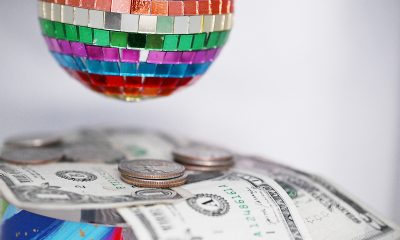Commentary
It’s time we talk about trauma
Coping with parental rejection a common struggle for LGBTQ community

(Author’s note: The content of this article may be triggering for some readers. If you or someone you know struggles with suicidal ideation, support can be found by calling or texting 988.)
In becoming a barback, I dove headfirst into the underbelly of fast-paced, homoerotic nightlife, which can be as stressful as it is fun but almost always entertaining. For me, though, the best part has been the camaraderie formed with my staff, in particular the other barbacks, all of whom bust ass behind the scenes while sharing laughs and memes along the way. Among this crew I’ve formed solid, healthy friendships, although it’s Marsel in particular who sees me in a way most in D.C. never has.
At first, I wasn’t sure if Marsel and I would get along. He’s ripped, tatted, confident, and hot, which is essentially the recipe for intimidating. Then we worked bar shifts together and I finally got to know him. Turns out he’s insanely witty, kind if you’re not an asshole, and overall easy to talk to. As it so happens, he and I are quite similar: two gays in our mid-30s working as barbacks who ended up in D.C. after growing up in rural, ruby-red states. Still, one parallel stands out above the rest: we both also have daddy issues.
That’s right—it’s a cliché and often a punch line of jokes (which can still be funny, by the way), but the reality for many queers is rejection from one or both parents. For some, including Marsel and me, the traits of a toxic parent warps childhood beyond just conservative thinking. Case in point: both of our dads harbored deeply rooted anger and resentment, making their reaction to learning who we are seemingly inevitable.
For Marsel, that pivotal moment came when his parents discovered he had a boyfriend in high school. In addition to filling his mind with fears about being gay, “they made me switch schools, severely monitored all my communications, what I would wear to school, and who I could hang out with. I spent the remainder of my high school years alone with no friends, isolated in a rural town outside of Nashville.”
A few years later, Marsel’s parents kicked him out upon learning he engaged in sexual activity with men. “They expelled me from the family home and, for many years, treated me as though I no longer existed to them. I spent the better part of a year living in my car and the rest of the time couch-surfing, relying on the kindness of friends.”
As for me: my dad served dual roles as patriarch and specter of my family. He was abusive physically and verbally, though still I tried maintaining a connection to the guy, likely fueling my attraction to mean guys but that’s another story. Despite my efforts, my father abruptly ended our relationship shortly after I came out. In our last phone call, he couldn’t even say the word gay, choosing instead “the way you are.” From there he listed everything he disliked about me, none of which was my homosexuality because these days no one admits so boldly to prejudice. Instead, they gaslight you with every other vulnerability as justification for mistreating you.
It’s been well over a decade since I’ve spoken to or even seen my father, and at this point I’m certain he’ll happily march to his grave without seeing me again. Losing a parent is always hard. Losing one because they don’t want to love you anymore, well—it’s a searing pain that rips your heart wide open. I wouldn’t wish it on my worst enemy.
Sadly, stories like these are far from unique among queers, nor are they the sole trauma we experience. From living in shadows and in shame, to schoolyard bullying and alienation, to pressures of religion or toxic masculinity, to a higher likelihood of sexual violence or discrimination in the workplace, we are affronted with so many traumas they’re nearly a marker for our kind. This also doesn’t include intersectionality with other traumas, such as a growing up in America a woman, a person of color, or poor. It’s no wonder, then, that the National Institutes of Health (NIH) published a review last year declaring, “LGBTQ people are at higher risk of PTSD compared with their cisgender/heterosexual peers.”
To most queers, what I just described is neither new nor surprising. In fact, in the face of this collective trauma, queers often come together in the form of fundraisers or Pride events. Yet despite rallying around the common inputs of our trauma, we rarely discuss the outputs. That’s right — emotional trauma has outputs, as neuroscience has proven, and when left untreated those outputs emerge as toxic traits in our adult lives.
To illustrate, let’s take it back to Marsel. While he hoped to leave his past behind in Tennessee, that wasn’t the case. “For things I hadn’t fully processed or dealt with, my past trauma would bubble up to the surface in the form of emotional triggers, which would inevitably spark my anger. My anger manifested in various ways, and I would often find reasons to justify my behavior. I was angry about my relationships, angry about my body, angry about my career – basically, I was angry about everything. And the root of all that anger was the unresolved trauma I hadn’t properly addressed.”
I couldn’t relate more. I tried to be tough and pretend I didn’t care that my father abandoned me, but the thought still crossed my mind and crushed me every time. Then I took that pain and subconsciously projected my anger everywhere — onto friends, onto other gays, onto myself, but especially onto my relationships, where I’d swing like a pendulum between states of hyperattachment and hyperdetachment with almost no in-between. Steadily, my unresolved trauma chipped away at my self-worth, and once that goes, self-destruction is inevitable.
Since the path to self-destruction is riddled with more trauma, the downward spiral only gets steeper. “My most impactful and lasting piece of trauma occurred two days before my 25th birthday,” Marsel told me. “The summer of 2013 I had been more than reckless with the frequency of my sexual encounters. I had often done pretty dangerous and wild things in regard to meeting up with guys. Then, on Dec. 10, 2013, I found out I was HIV positive.
“At the time it was quite Earth-shattering news because I knew no one who was positive and had no idea what this would mean for me. I was pretty hard on myself for being reckless, and it took a bit to pick myself up, but over time I used it to inspire me to live my life fully and authentically.”
Often it takes Earth-shattering events to serve as a wakeup call for change. When my PTSD transformed into social anxiety, it was easy to suppress at first with sex, drugs, and most often alcohol, which inevitably led to the occasional outburst, or the loss of a friend. Yet still I’d go out, even more anxious I’d run into newly formed enemies, so I’d drink more, at times pre-gaming by myself before pre-gaming with others before eventually stumbling into the bars. Naturally this facilitated more outbursts, cost me more relationships, and once landed me a night in jail. The further I unraveled, the more I numbed it with heavier drinking, darker sex, harder drugs, until finally — it pains me to write, but for the sake of honesty I must — I was contemplating, threatening, and attempting suicide.
Sorry to get heavy, but it’s important to dissect why and how queers experience emotional hardship. We don’t struggle simply because we’re queer but rather due to the trauma thrust upon us by a world that still fears queers. As a result, normal events — such as a breakup or losing a job — can feel insurmountable, like proof that those who rejected us were right all along.
Thankfully, queers can rely on each other for support, right? Sounds nice in theory, but in practice we D.C. gays are pretty fucking mean to each other. Sure, we find our friends, but often our community is itching to judge us at every corner. We throw insults, ostracize those deemed “crazy,” and constantly seek validation from people we (Instagram) deem perfect. And no, I am not above this. I’ve been a narcissist. I’ve burned bridges with glee. Looking back, it was my inner turmoil bursting at my seams.
Marsel summarized our behavior well: “Everything is a trauma response. That mean gay you see at the bar – trauma response. That gym obsessed muscle queen – trauma response. That career-driven type-A Capitol Hill gay – trauma response. Most of the time I find when people are treating me a certain way, it has little to do with me and everything to do with their own trauma.”
So, we find ourselves amid a queer trauma cycle in which hurt queer people hurt more queer people. Sounds bleak, but the good news is we also have the power to change that. And we must, for a recent survey by the Trevor Project found a staggering 41 percent of LGBTQ+ youth aged 13 to 24 considered suicide in the last year alone. Queer trauma isn’t going away, so it’s on us to avoid bestowing our trauma to younger queers and instead provide a safe community not only to thrive but to experience inevitable lows as well. That may seem like a tall order, but based on what I’ve learned from Marsel, two measures can move us closer.
First is simple self-reflection, for when trauma goes unnoticed it grows steadily like mold, potentially upending your behavior without you even noticing. “As I moved through different stages of my life,” Marsel explained, “I began to see how this unprocessed trauma and anger influenced so many aspects of who I had become. It colored my reactions to conflict, my relationships with others, and even my relationship with myself.”
The only way to process trauma is to excavate your mind and dissect underlying memories and feelings, which can be accomplished in many ways including journaling, art, or my personal favorite: therapy. While I didn’t start therapy until my 30s, taking that leap became a life-changing, and potentially lifesaving, decision. “Through therapy,” added Marsel, “I was able to uncover the reasons why this trauma continued to follow me throughout my life and how it manifested.”
It all sounds so simple: get therapy, and you’ll get better. However, therapy only goes as far as you let it. Progress is never linear and brutal honesty is a must; as a result, not everyone gets there (no judgment though, for I’m not all the way there myself). In fact, my hardest step was admitting I needed therapy at all, for seeing a therapist is often treated like spotting a UFO — no one wants to admit it out of fear of looking insane. However, often the fear of appearing crazy leads to the most toxic behavior, as I’ve witnessed in D.C. time and time again.
To heal requires dissolving the ego. While tough, it’s truly the first and most important step.
As for the second measure: we need to cut each other some slack. No, this doesn’t mean excusing terrible behavior, but it does mean holding the belief that others — including and especially your queer enemies — can grow. If not, then tell me: who’s supposed to believe in your growth if you don’t believe in the growth of others? And if your response is you don’t need to grow, you likely have the most growing to do.
Writing off one of us is writing off all of us, and if we keep burning each other at the stake for every flaw, we’ll grow weaker as a community. Besides, the rest of the world already does that to us. Why do it to each other as well?
My hope is for more queers to see each other the way Marsel and I do. Not because he and I are perfect — if anything, we’re far from it. Instead, in between inside jokes, we share our mistakes, our hardships, and the work we’re putting in toward self-love and improvement. That feels rare in a city obsessed with perfection, but that’s also why it feels genuine.
And genuine feels worlds better than perfect ever could.
Jake Stewart is a D.C.-based writer and barback.
Commentary
A conversation about queers and class
As a barback, I see our community’s elitism up close
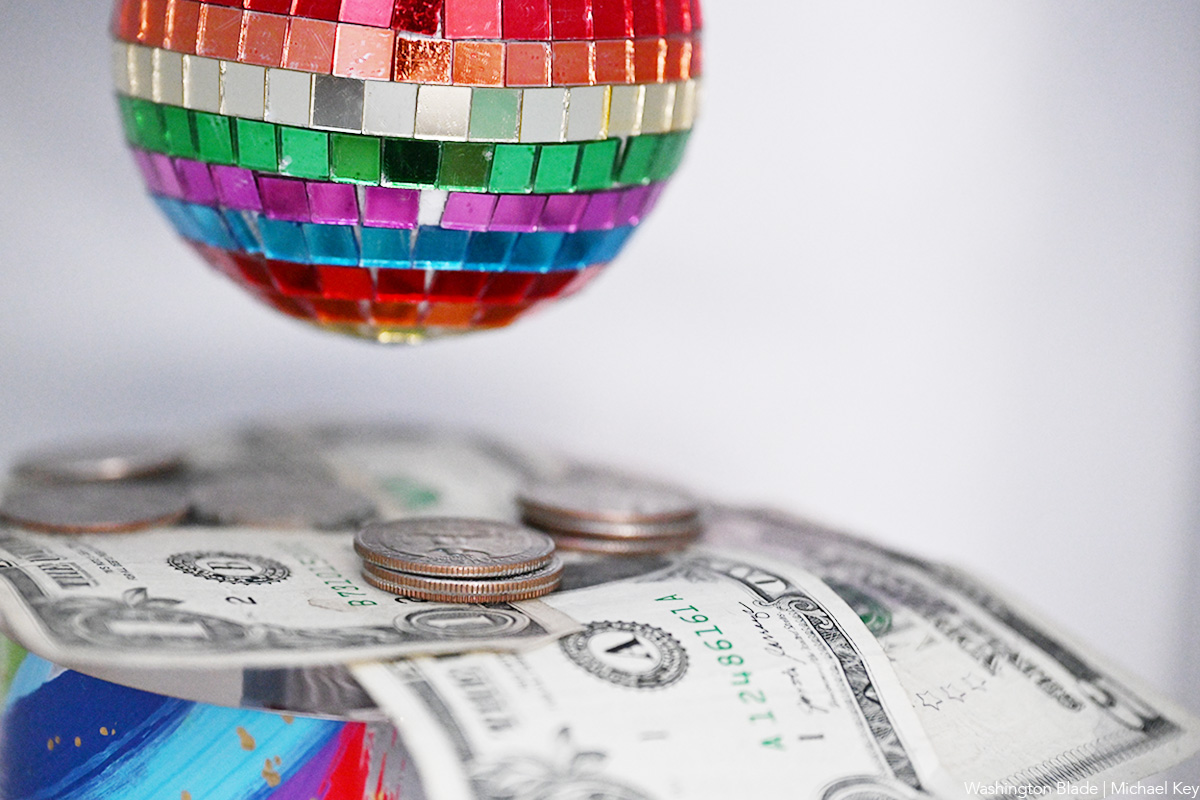
In the bar, on the way to its now-Instafamous bathrooms, there’s a sign that reads, “queer & trans liberation means economic justice for all.”
I remember seeing that sign the first week the bar opened, and ever since I often find myself reflecting on that message. I stand fully in agreement. That’s why laws protecting queers in the workplace are essential, for far too often we are targeted otherwise. It’s also why I love working at the bar, since it provides opportunities for queers from all over the spectrum to earn a living. At a time when I gave myself space to pursue art, it was the bar that enabled me to do so.
It’s one thing to support the LGBTQ community in spirit, but that spirit means jack in a capitalist society if viable economic opportunities don’t exist. Speaking of jack, there’s a fellow barback named Jack who I fangirl over often. Jack is a decade younger than me, but damn I wish I had his sex appeal at his age (or any age, for that matter). He also has a mustache that easily puts mine to shame.
Jack not only agrees but took things one step further. “Economic inequality IS a queer issue,” he told me, “especially as we move into the most uncertain period of American politics I have ever lived through, it is apparent our identity is now a fireable offense.”
Uncertain is right. We’re fresh off the heels of a trade bonanza, one caused for literally no reason by our current commander in chief. Yet there emerged a strange division when discussing the trade war’s “unintended” consequences. For working class comrades like Jack and myself, we’re stressed about increasing prices in an already tough economy. But the wealthier echelons of our country had something else on their mind: the spiraling stock market. This alone highlights the story of our economic divide, where the same event produces two separate concerns for two distinct classes.
This is not to say the stock market is not important, but sometimes the media forget many Americans don’t own stock at all, including a vast majority of people between 18 and 29. In fact, according to Axios, the wealthiest 10 percent of Americans own 93 percent of the entire stock market, with the richest 1 percent holding $25 trillion — that’s right, trillion with a “t” — in market value. So, when the president reversed course on trade, it was less about high prices hurting everyday Americans and more about the dent created in the wealth of the wealthiest. And I’ll admit: that bothers me a lot.
If there is any takeaway from Trump’s trade war, it should be this: Economic inequality is the highest it has been in decades and, if left unchecked, will destroy the fabric of our country. We are steadily moving toward oligarchy status—if we’re not there already, that is—and it seems to grow worse with each passing year and administration. But in a city of D.C. gays who often skew corporate, I wonder: Are we all on the same page here?
After becoming a barback, I have my doubts. From questions about what else I do, to comments encouraging me to work hard so that I can be a bartender one day, I quickly learned the gay world is not too fond of barbacking. Barebacking, sure, but not barbacking. And hey, I get it—we’re not the alcohol hookup at the bar. Still, we are part of the service industry, and while some people are incredibly kind, you’d be surprised at how many turn up their noses at us, too.
Recently, I’ve come to realize my class defines me as much as my orientation does, if not more. Naturally, when you come from a rough neck of the woods like I do, it’s easy to feel out of place in a flashy city like D.C., which Jack noticed, too. “Anyone from a working class background could testify to that,” he said. “I don’t really know anyone from true upper class backgrounds, but I’d imagine their experience is one that leans into assimilation.”
Assimilation is a key word here, for admittedly gays love to play with the elite. Often, we don’t have children, meaning more money for the finer things in life, but that also means we may not think about future generations much, either. I’ve written before that our insecurity growing up has us ready to show the world just how powerful gays can be—power that comes in trips to Coachella and Puerto Vallarta, or basking in the lavish houses and toys we own. There’s already a joke that gays run the government, and corporate gays kick ass at their jobs as well. So, given the choice between fighting inequality and keeping a high-paying job, I must admit I have a hard time seeing where D.C. gays stand.
Admittedly, it worked out in our favor before, given that many corporations catered to our economic prowess over the years. But look at what’s happening now: Many corporations have kicked us to the curb. Protections are being stripped from queers, particularly for our trans brothers and sisters. Law firms are bowing down to Trump, offering hundreds of millions in legal fees just for their bottom line. All of this will hurt both queers and the working class in the long run, so again I ask: Corporate gays, where do you stand? Because if you remain complicit, that’s bad news for us all.
I don’t want to sound accusatory, and I hate being a doomsday type, so allow me to end this on a better note. Strength is not about celebrating when times are good. Arguably, true strength emerges when times get tough. These are tough times, my friends, but that also makes now the perfect opportunity to show the world just how strong we are.
At a time when the world is pressuring us to turn our backs on each other, we must defy them to show up when it counts. Corporate gays—now more than ever, at a time when the economy is turning its back on queers, we need you. We need you to stand up for the queer community. We need you to make sure no one gets left behind. We need you to show up for us, so that we can show up for you, too.
Ten years ago, the economy didn’t turn queer out of nowhere. The economy turned queer because we made it turn queer.
And if we did it once, surely we can do it again.
Jake Stewart is a D.C.-based writer and barback.
Commentary
Fight against TERFs goes global
UK Supreme Court on April 17 ruled legal definition of ‘woman’ limited to ‘biological sex’
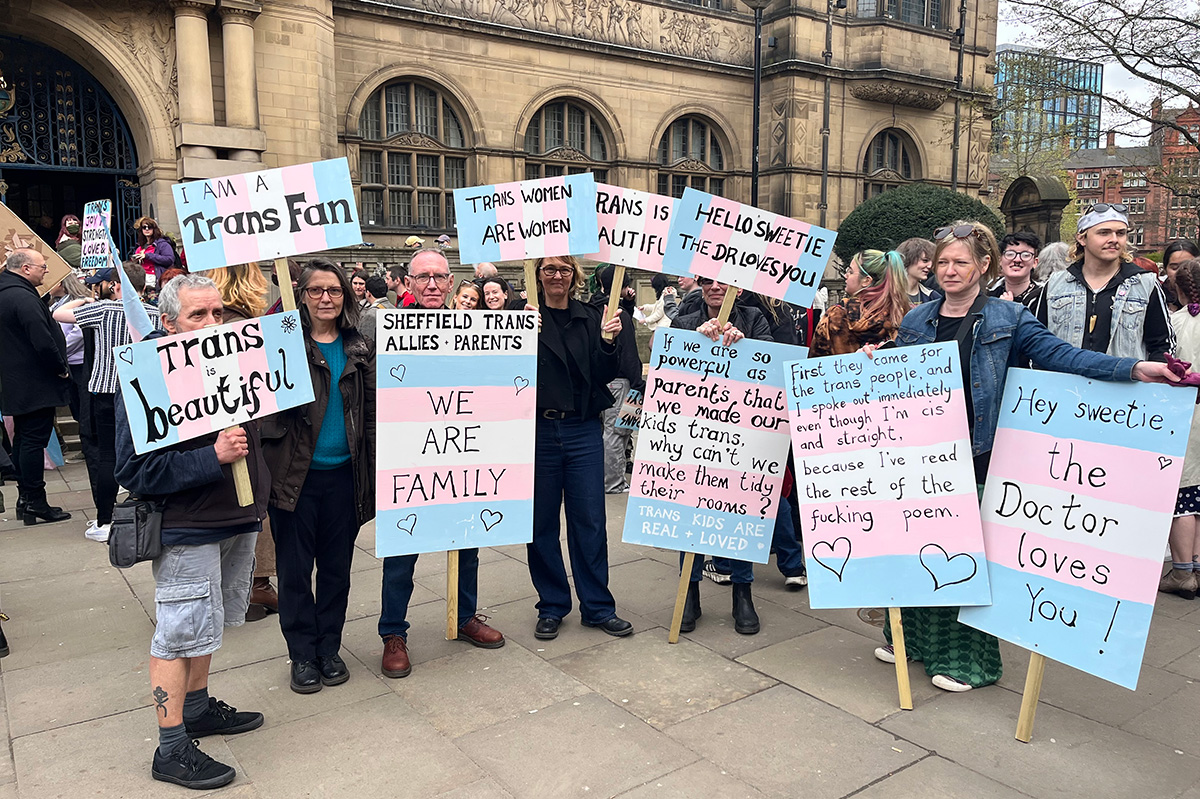
After last week’s U.K. Supreme Court ruling that reduced the legal definition of “woman” to “biological sex,” footage of a group of women celebrating the decision with champagne spread virally across the media. These women are known as trans-exclusionary radical feminists, or TERFs.
In response, thousands of transgender people and their allies — including parents, siblings, and pro-trans celebrities — flooded the streets of London, Sheffield, Manchester, Cardiff, and other cities across the U.K. on April 19, to protest the erosion of trans rights. The fight between TERFs and trans* people have become more visible to those outside of the British LGBTQ+ community.
But this isn’t just about the U.K. The problem has gone global. For me, as an openly trans person who has lived in four different countries, it feels deeply personal.
For years, British TERFs have been spreading misinformation about gender around the globe, collaborating with far-right politicians and inspiring anti-trans violence.
At a pro-trans protest I attended in Sheffield, one of the speakers, Sofia Alatorre, a trans woman from Mexico now living in the U.K., dedicated her speech to the ways British TERFs, with their powerful movement supported by celebrities, such as “Harry Potter” author JK Rowling, are influencing people in South America.
“When I go to Mexico now, I don’t just hear people talking about transsexuals as degenerates anymore. Instead I hear about what bathroom we should use, or whether we belong in sports,” Sofia told the Washington Blade. “These are not lines that come from Mexico. They are finely crafted narratives designed to drive a wedge by weaponizing ‘common sense’ gut reactions to complicated subjects. Because without these, they’d have to face the uncomplicated reality: We are just people trying to live our lives happily. In the U.K., the entire media infrastructure is sympathetic with ‘gender critical’ TERF ideology to the point that sympathy blurs into outright support. With these lines finding footing in the Global South, it seems clear that the U.K. has become an exporter of transphobia.”
Unfortunately, TERFs even showed up at a trans event, attempting to argue with the speakers.
One of the trans* organizers of the Sheffield demonstration, who preferred to remain anonymous, expressed their love for the trans* community and trans* people. They emphasized that they are not expressing hatred toward TERFs — they simply want them to reconsider their position.
“If you’re a TERF and reading this, we don’t hate you,” they said. “We don’t hate you. There is nothing I hold in my heart but deep pity for you. You do not know the community of love that we have as transsexuals, and you only know your community of hatred. If you are tired of feeling nothing but hate, come and talk to us, we’re nice, I promise. This protest is a rallying cry that we can’t lose, that we are all here for each other, and that we can do whatever the f*ck we want when we work together. We may be out here today in rage, but what keeps us alive is love.”
But it doesn’t seem like TERFs are ready to show love toward trans people — or to see trans women as their sisters. At our local protest in Sheffield, they were so agitated, jumping toward speakers and trying to engage with them, that the police had to intervene and remove them to prevent a fight. It reminded me of TERFs’ behavior I encountered in St. Petersburg, Russia, and in Russian-language online spaces.
Unfortunately, it’s not just South America that has been influenced by UK TERFs. The country I currently live in is known within European and U.S. queer communities as “TERF Island.”
Some trans Americans even avoid traveling to the U.K., afraid of the influence that Rowling holds over millions due to her wealth and cultural impact.
In Russia, Ukraine, and other Eastern European countries, so-called “radical feminism” is the most prominent feminist movement. Radical feminism, which emerged in the 1960s, is based on the belief that patriarchy is the root of all other forms of oppression.
In modern Eastern Europe, this has led to a situation where many feminists fail to acknowledge racism, ableism, and transphobia — excluding everyone except cisgender people, Slavic, atheist, and able-bodied people from their movement. Historically, radical feminists have not focused much on the trans* community, but with the rise of trans* activism in the 2000s, many became fixated on targeting trans people.
Many of my Russian-speaking trans friends have been badly bullied by local TERFs. Some even experienced suicidal thoughts and severe anxiety due to online harassment from them. And these TERFs weren’t developing their ideology locally — they were importing it. The anti-man rhetoric was inherited from American prominent radical feminists like Andrea Dworkin and Ti-Grace Atkinson, while the transphobic elements were “exported” to Eastern Europe, primarily from the U.K. and specifically Scotland.
Even before Rowling, there was Magdalen Berns, a Scottish TERF YouTuber who was extremely popular among Russian girls and women. It was Berns who helped bring Rowling into anti-trans activism.
I spoke with Sophie Molly, a Scottish trans activist and politician who ran as an Independent MP candidate in the 2024 U.K. general election for the Aberdeen South constituency.
TERFs ruthlessly harassed her during her campaign.
“Transphobia is institutionalized in the UK. It is systemic and it’s getting worse with each passing day” she told me. “Local TERF have a slew of legal professionals on their team too. Like Sarah Phillimore and Joanne Cherry. TERFs have been continually lobbying the government to oppress trans and gender non-conforming people. Dragging their rights and freedoms through the courts. All under the pretense of protecting the rights of women. In reality these conservative groups are backed and funded by billionaires. Billionaires that want to remove trans people from public life, due a personal prejudice they hold. The majority of TERFs are wealthy and privileged white women. Most of them are not LGBTQIA+. They have obscene amounts of money to spend on persecuting a tiny minority. Trans women are women — no matter what the U.K. Supreme Court dictates.”
But another problem of TERFs is that they are policing women as well. Even the Supreme Court decision targeted women.
“The [Supreme Court] decision is an attack on the rights of both trans people and women,” Sophie said. “It reduces women to their anatomy, which is extremely regressive and misogynistic in my opinion”
Women for decades have fought to ensure their lives wouldn’t be defined by the sexual organs they were born with. TERFs are now doing exactly that — attempting to reduce womanhood to biology, while also dictating how women should behave, all in the name of “sisterhood.”
Modern British TERFs have received support from figures like musician, far-right influencer, and convicted murderer Varg Vikernes, as well as ultra-conservative organizations such as the Russian Orthodox Church, an institution notorious not only for justifying the war in Ukraine with homophobic rhetoric but also for its long history of opposing women’s rights. This kind of “feminism” is a global threat, not only to trans* people but also to girls and women everywhere.
Editor’s note: The author uses trans* in order to be inclusive of nonbinary and gender queer people.
Commentary
America’s detransition: The far-right’s coordinated attack on climate policy and trans rights
Progress framed as ‘mistake that must be undone’
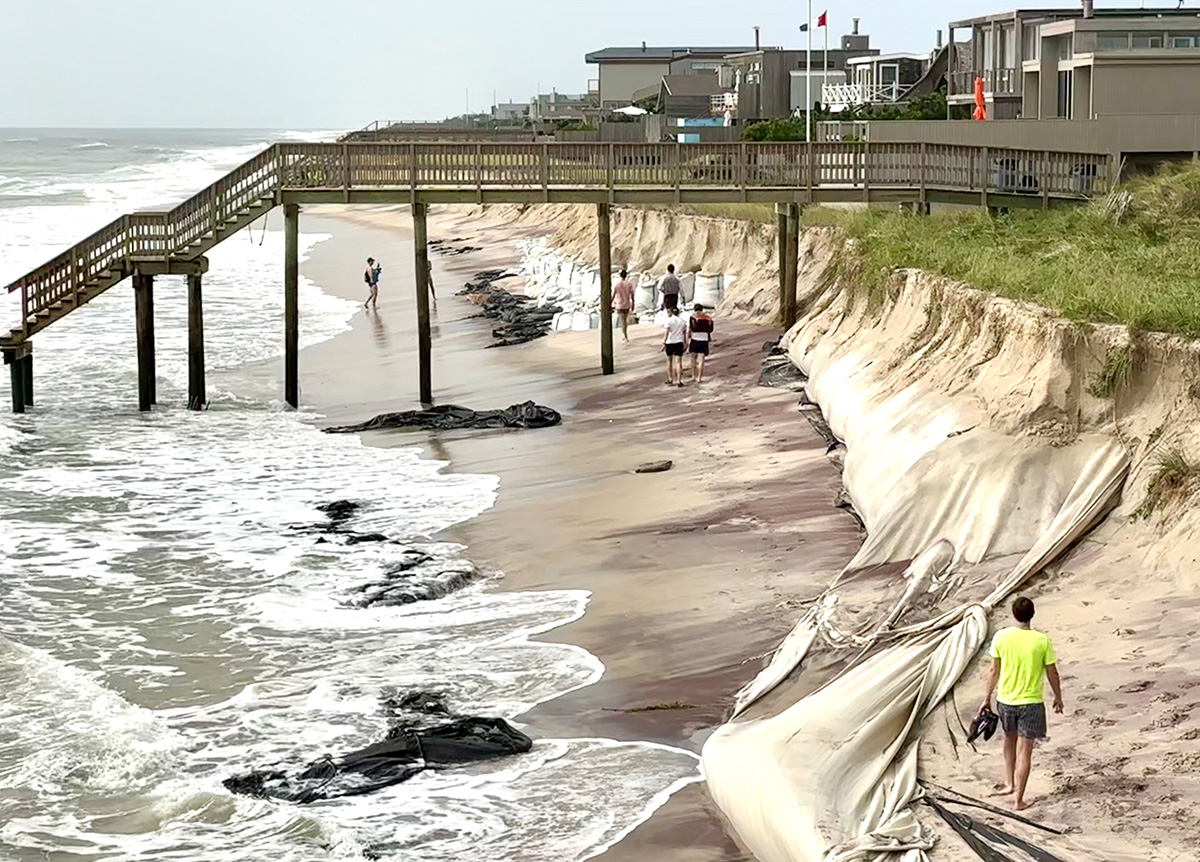
What if the far-right’s endgame isn’t just stopping progress, but erasing it altogether? From banning trans healthcare to reversing climate policies, they aren’t just resisting change — they’re trying to force the world back into an imaginary past that never existed.
Across climate policy and trans rights, the right isn’t just opposing change — it’s actively detransitioning America, unraveling progress under the guise of “common sense” and “restoring order.” But this isn’t just about ideology. It’s about power.
From pulling out of the Paris Agreement to banning gender-affirming healthcare, the right has perfected a political strategy that frames progress as a mistake that must be undone. Whether it’s climate action or trans visibility, any step toward justice is framed as dangerous, unnatural, and in need of correction.
And if we look closer, these attacks aren’t just similar — they are deeply connected. By comparing the right’s climate rollbacks and its war on trans rights, we can see a broader strategy at work: One that fuels fear, manufactures doubt, and ultimately serves the interests of those already in control.
The fight isn’t just about policy. It’s about who gets to belong in the future.
The manufactured crisis: Who profits from reversal?
To justify rolling back both trans rights and climate protections, the right leans on manufactured crises — presenting change as a dangerous social experiment gone wrong. And the most effective way to do that? Weaponizing doubt.
Take climate change. Despite overwhelming scientific consensus, climate denialists cherry-pick uncertainties — using rare instances of changing climate models to cast doubt on the entire field.
Similarly, the right has latched onto detransition stories, amplifying a handful of cases where individuals regret transitioning to suggest that all trans people will regret their identities.
By focusing on individual regret rather than systemic realities, these movements create the illusion that climate action and trans healthcare are harmful mistakes rather than necessary progress. The message is clear: We must “correct” these wrongs by detransitioning the country back to a time before this supposed damage occurred.
But who actually benefits from this rollback?
- Fossil fuel companies profit from climate skepticism, ensuring we remain dependent on dirty energy.
- Right-wing politicians fundraise off anti-trans fearmongering while avoiding economic issues that might actually improve people’s lives.
By making people believe they are “fighting back” against elites, the right obscures the actual elites profiting from this manufactured outrage.
The spectacle: Turning trans lives and climate policy into distractions
None of this would work without media spectacle. Right-wing politicians and media outlets know that the most effective way to keep people from questioning power is to keep them emotionally invested in a performance.
Take the far right’s obsession with trans youth. They flood the airwaves with panic over puberty blockers, despite the fact that gender-affirming care is exceedingly rare.
A peer-reviewed study analyzing private insurance claims found that out of more than 5 million adolescents ages 8 to 17, only 926 received puberty blockers and 1,927 received hormone therapy between 2018 and 2022.
Similarly, climate policies are attacked as elitist schemes to control the working class — painting green energy initiatives as an attack on personal freedom, just as gender-affirming care is framed as an attack on children.
By shifting the focus onto symbolic enemies — the “radical trans activist” or the “climate elitist” — the right gives people someone to hate while avoiding the real sources of economic and environmental crisis.
And this isn’t just a cultural strategy. It’s a business model.
Capitalism is in the business of creating problems, then selling solutions.
- Oil companies push carbon capture technology while continuing to pollute — ensuring the crisis is never fully solved, only managed.
- The right promotes “detransition support” while banning trans healthcare, creating a crisis where one didn’t exist.
Both strategies ensure that nothing actually changes, while making people feel like they’re participating in a fight for freedom.
It’s a distraction, and it’s working.
Nature as a battleground: The far-right’s fear of fluidity
At its core, the war on trans people and the war on climate action stem from the same fear: The fear of change.
Queer ecology tells us that nature itself is fluid, adaptive, and in constant transition. Yet, the far-right insists on rigid, binary categories:
- Man/Woman.
- Fossil Fuels/Renewables.
- Traditional/Disruptive.
In both cases, fluidity is framed as unnatural — something that must be controlled through political intervention.
- Fossil fuels are labeled “natural” energy, while renewables are framed as “forced” and “unnatural”—a rhetorical tactic explored in a 2025 study on far-right climate discourse.
- Trans identities are labeled “unnatural choices,” requiring government bans to prevent people from making “mistakes.”
But what’s truly unnatural? The attempt to freeze society in time. The climate has always changed. Gender has always been fluid. The far-right isn’t defending nature — they’re defending control.
The far-right’s detransition obsession mirrors climate rollbacks
Capitalism is not interested in actual progress — it only cares about control.
The obsession with detransition mirrors climate rollbacks in that both are framed as necessary corrections to a mistake.
- The Paris Agreement withdrawal was presented as a return to “energy independence.”
- Trans bans are framed as returning to “biological reality.”
But the goal isn’t returning to a real past. It’s about constructing a version of the past that justifies present oppression.
- Climate denial isn’t about scientific debate — it’s about maintaining corporate power, as Time reported in 2025.
- Anti-trans laws aren’t about protecting kids — they’re about enforcing gender hierarchies, according to a 2025 New York Times editorial.
Neither of these rollbacks is accidental. They are part of a deliberate strategy of control — one that tells us that progress is always temporary and can always be reversed.
Who owns the future?
If we allow the right to detransition America, we risk a world where progress is always reversible, and power remains in the hands of those who benefit from disorder and fear.
The real question isn’t whether these issues are linked — it’s why they were ever separated to begin with. The fights for climate justice and trans rights are one and the same:
- A fight against the illusion of permanence.
- A fight against manufactured crisis and controlled reversal.
- A fight for a future that actually belongs to all of us.
So what do we do?
- We must refuse to accept their manufactured doubt — trans rights and climate action are not mistakes that need fixing.
- We must reject their false nostalgia — there is no past to return to, only a future to create.
- And most importantly, we must recognize that these struggles are connected.
If we fail to see this, we risk allowing reactionary forces to shape the future. But if we understand their playbook, we can disrupt the spectacle and refuse to let them dictate what comes next.
Because this fight isn’t about going back. It’s about moving forward — and making sure no one can take that future away.
Cody Hays is a Ph.D. student at Arizona State University’s Walter Cronkite School, researching media psychology, public understanding of science, and digital misinformation, with a focus on ideological worldviews; they are a Graduate Research Fellow in the MIDaS and Views and Values Labs, executive editor of the Journal of Public Interest Communications, and a nonprofit communications strategist with over a decade of experience in combating disinformation and mobilizing action.
-

 Federal Government5 days ago
Federal Government5 days agoHHS to retire 988 crisis lifeline for LGBTQ youth
-
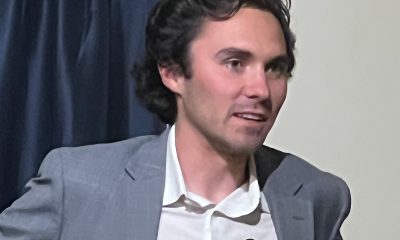
 Opinions5 days ago
Opinions5 days agoDavid Hogg’s arrogant, self-indulgent stunt
-

 District of Columbia4 days ago
District of Columbia4 days agoD.C. police seek help in identifying suspect in anti-gay threats case
-
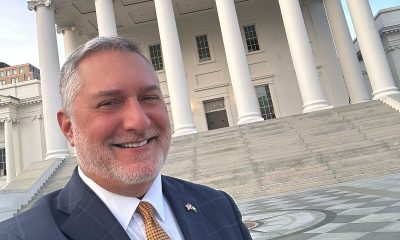
 Virginia5 days ago
Virginia5 days agoGay talk show host wins GOP nom for Va. lieutenant guv





